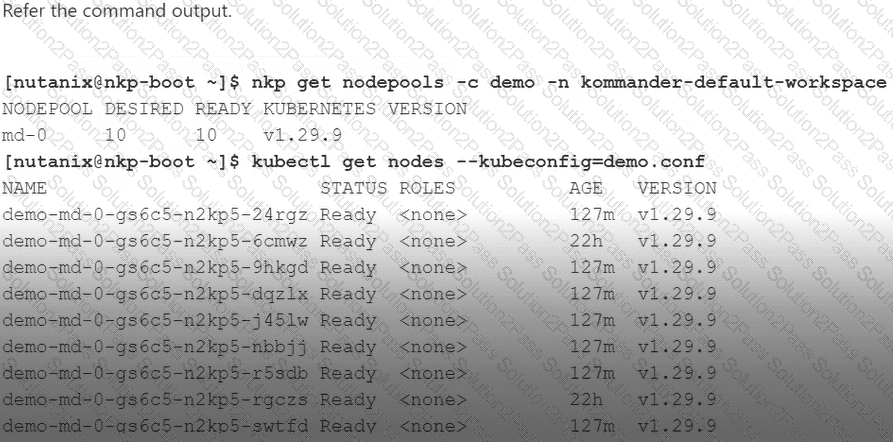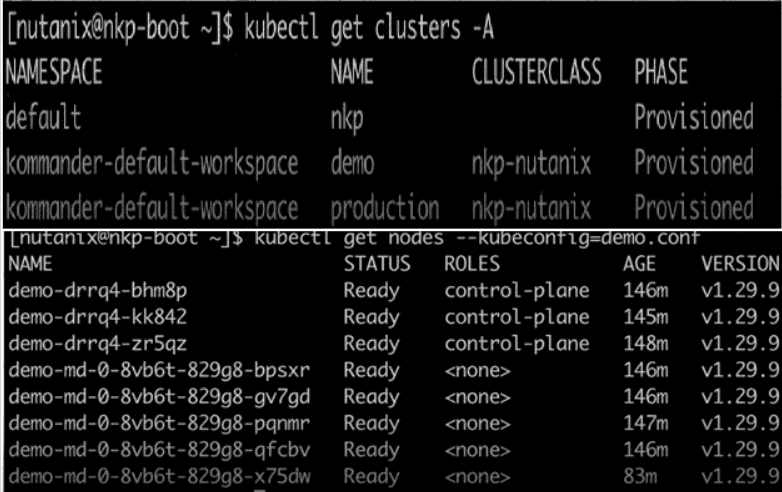NCP-CN Nutanix Certified Professional - Cloud Native (NCP-CN-6.10) Free Practice Exam Questions (2025 Updated)
Prepare effectively for your Nutanix NCP-CN Nutanix Certified Professional - Cloud Native (NCP-CN-6.10) certification with our extensive collection of free, high-quality practice questions. Each question is designed to mirror the actual exam format and objectives, complete with comprehensive answers and detailed explanations. Our materials are regularly updated for 2025, ensuring you have the most current resources to build confidence and succeed on your first attempt.
A Platform Engineer is preparing machine images for NKP through the NIB or KIB process. What is the purpose of doing this?
A Platform Engineer has a requirement for backup and recovery and would like to leverage an Out-Of-The-Box solution distributed with NKP. What is the backup and recovery solution distributed for NKP?
A Platform Engineer is looking to backup and restore persistent volumes and other cluster resources. Which two NKP licenses include backup and restore functionality? (Choose two.)

The Platform Engineer needs to expand an NKP Pro demo cluster due to workload capacity constraints. The demo cluster has 150 vCPUs available to it from a licensing standpoint. Each worker node has 8 vCPUs and each control plane node has 4 vCPUs.
Which two options are valid for expanding the demo cluster and remaining compliant with licensing? (Choose two.)
A Platform Engineer is deploying NKP into a highly secure vSphere environment. The NKP cluster will be air-gapped, and must also be FIPS compliant. The OS platform to be used for NKP cluster nodes is RHEL.
What must the engineer do to properly prep an OS image and have it be deployed as a FIPS compliant NKP cluster node?
A Cloud Engineer is deploying an NKP cluster into an AWS environment. By default, when deploying NKP on AWS infrastructure, it generates the supporting infrastructure necessary for the cluster (VPC, subnets, ELBs). However, the AWS team has insisted that the NKP cluster be deployed on existing AWS infrastructure. How can the engineer meet this requirement?
Refer to the exhibits.
A Cloud Administrator had provisioned a Kubernetes cluster named demo that is no longer actively being used. A Quick review from the Systems Engineer confirms that the following VMs are part of the demo Kubernetes cluster

How should the demo cluster be properly deleted?
Using an NKP Ultimate license, a Platform Engineer has created a new workspace and needs to create a new Kubernetes cluster within this workspace. However, the engineer discovers that the Create Cluster option is grayed out, as shown in the exhibit. How should the engineer resolve this issue?
A Platform Engineer works for a service provider and needs to establish access and authentication for multiple clients into an NKP cluster. Each client has their own LDAP source that should be used for authentication into the cluster.
How would this be accomplished?
A Platform Engineer is attaching existing Kubernetes clusters to NKP, but a particular Kubernetes Amazon EKS cluster is getting errors with application deployments. These errors are related to persistent volumes. What could be the issue, and what can the engineer do?
A Platform Engineer needs to create an NKP custom image for vSphere.
Which option should the engineer use?
